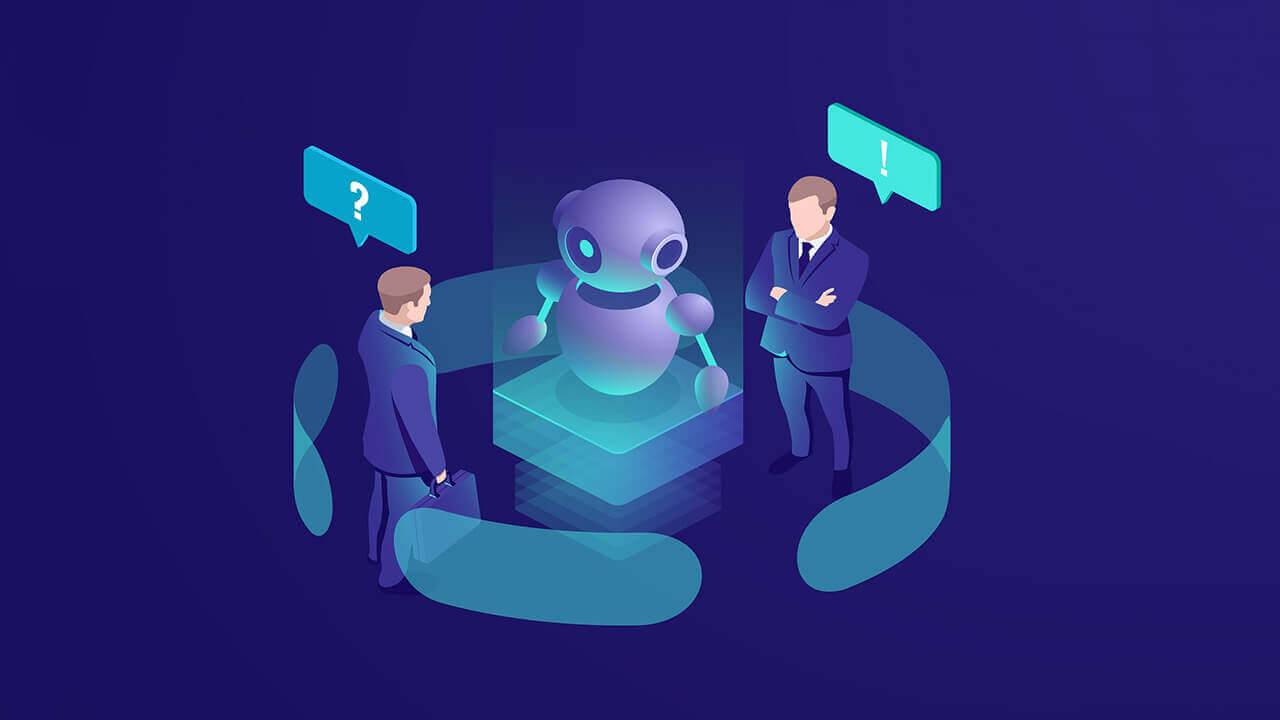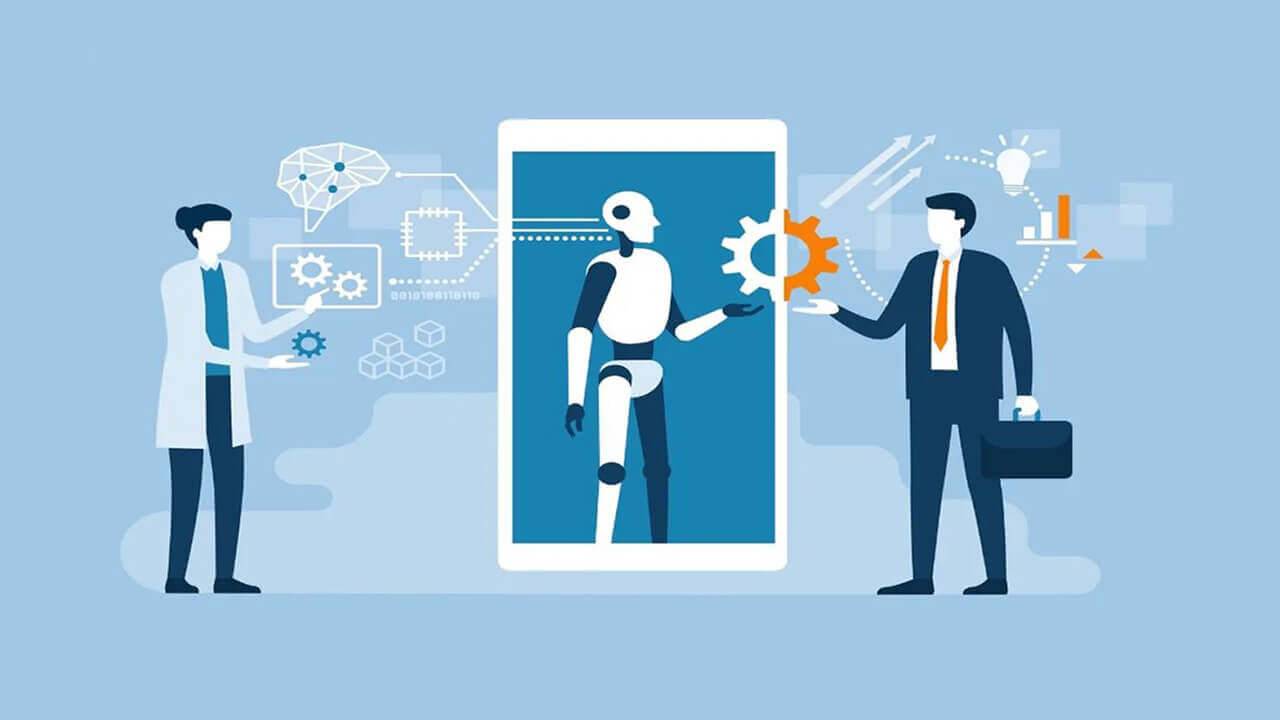How AI Marketing Could Help Make Your Business More Competitive

What is AI Marketing?
Artificial Intelligence Marketing or AI Marketing is the use of machine learning to reach, act convert and engage the customer. A recent survey of small business CEOs has found that artificial intelligence, or AI, is already an important factor in everyday business processes. One in three leaders say that AI is the technology likely to have the most disruptive effect on their businesses in the near future.
If you run a small business, you don’t necessarily need to wait for the future to arrive to discover what kind of contribution AI may be able to bring. AI-based tools available today offer time efficiency, cost efficiency, reduced risk, and improved flexibility.
Whether you have already begun applying AI technologies to your business or are yet to try them, you may not be fully aware of the advantages that they offer. What follows are four fundamental ways in which AI could prove to be an asset to your small business.
AI-based CRM software could streamline sales
An AI customer-relationship management system, or CRM, is designed to keep an eye on every form of communication you have with customers, including email, phone conversations, and social media, and to use the information gathered to improve the sales process. AI-based CRM is able to help small businesses automatically analyze communications from customers, and develop improved lead generation.
Not only does AI-based CRM software help improve lead generation, it does so with greater cost efficiency than regular CRM software, and it helps sales teams acquire better insight into the sales process, as well.
AI-based chatbots can help offer better customer care
Small businesses that deal with end customers often use AI-based chatbots to offer basic customer service both during and after business hours. Chatbots — which usually appear in the form of little pop-up chat windows on business websites and offer answers to simple customer questions about things like product availability and warranty policies — can help businesses appear extra responsive, and win points with customers. If you don’t have a dedicated human customer service or sales team in place 24/7, an AI-based chatbot could be the solution you need.

Bring greater efficiency into human resources
AI tools are increasingly in use in human resources departments to help speed up hiring processes and to gather feedback from recent hires about improving hiring processes. Improvements to these systems can have a direct effect on the bottom line.
AI is widely used to scrutinize resumes and pick promising ones based on set criteria. HR executives are able to effortlessly screen out irrelevant resumes in this way, and direct valuable time and resources to only the most promising ones. Additionally, once new employees are brought on board, the frequent questions they are likely to have about various company rules and policies are efficiently taken care of by chatbots without the need for human HR personnel.
Keep an eye on the competition
Analyzing all the information that competing businesses produce over the course of each business day – from social media posts to YouTube content – is important activity to help you maintain perspective to do with your own performance in these areas and order improvements when your efforts fall behind. AI competitor analysis tools are able to study digital information from competitors and produce easily digestible insights into pricing changes, and changes in the kind of content used as well.
AI technologies may only have begun to transform the way business is conducted, but they hold much promise. If your business doesn’t yet use AI to improve efficiency, it’s important to look into investing in it to help boost the competitiveness of your business.
Helping Business Managers Compete with AI
Managers may use different tools to help move their organizations ahead, but their ability to think is always the most fundamental of those tools. Thinking makes use of two forms of information processing: the conscious kind, and the subconscious kind. Daniel Kahneman, winner of the Nobel Prize in Economics, terms these fast, and slow thinking.
Computers routinely beat humans in both kinds of thinking, these days. Once computers are programmed with all the logical principles and rules involved in the execution of a task, they can easily outperform humans in deliberate thinking and reasoning. From picking and choosing investments for clients, to determining how to price products, and evaluating the risks involved in supply chains, managers every day turn to computer-based simulation and mathematical modeling.
Humans used to be better than computers when it came to pattern recognition, an intuitive activity, but computers can now be programmed to apply machine learning to parse vast amounts of data to come up with their own intelligent guesses. They have been proven in recent research to be better than human experts at reading CT scans to detect cancer, for example.
Considering the direction in which computer intelligence is headed, it may be reasonable for managers to wonder if they will soon be replaced by well-programmed computers. The truth is, however, that deeply intuitive thinking, or really slow thinking, to use Dr. Kahneman’s terminology, is still, for the foreseeable future, an entirely human field.
Reframing is one example of the way slow thinking is often applied. Reframing is not about solving problems; rather, it is about applying a mix of conscious and unconscious thinking to revisit information that decisions are conventionally based on, and reconsidering the value of traditional goals.

Reframing what problem you need to solve can be difficult work. It requires being able to overcome mental resistance — to escape entrenched conventions, and to go against company traditions and your own learning and experience. It can take long periods of time to overcome these mental barriers; these are the reasons such thinking is considered really slow.
Reframing is an important activity when it comes to innovating in fundamental ways because it is the way business organizations strike out on new paths that other businesses haven’t yet recognized.
Even with the latest in artificial intelligence, computers don’t get started on solving problems until human programmers are able to define those problems for them. AI, in its most basic form, is a set of prediction algorithms. When a small business lending company like Kabbage is able to identify a market and disrupt it, it is able to do it through taking up business problems like evaluating creditworthiness and defining them as prediction problems for computers.
In a business environment in which human managers are able to leverage AI to supercharge intuitive and conscious thinking, skills at reframing problems for AI can be what set managers who are successful apart from those who aren’t. What follows are four methods to adopt that can help you be more successful as a manager working with AI.
Distance yourself from the problem
Research suggests that giving a problem a gestation period — where your mind is able to put some distance between itself and the problem — may allow it to gain a fresh perspective. Once you work hard on a problem for a few hours, it can pay off to let it go, and do something different. When you come back to the problem hours later, you’re likely to find that you can see it in a new way.

Make a list of every implicit assumption
To be efficient, the brain brings a series of basic assumptions to every problem that it works on. It can be convenient to bring underlying assumptions about a number of basic parameters to any problem, simply because then, you don’t need to consciously hold them in your mind. These assumptions, however, can make it hard to be truly creative in coming up with a solution. Dedicate the time to put down every one of your assumptions in writing. Once you have the list, you could assign the problem to two different groups of people, each one with different underlying assumptions. They could work on the problem and argue for the merits of their case. This process could bring about new insights.
Try having fun with the problem
Solving a problem doesn’t have to be all about serious work. Bringing in an imaginative new way to look at your problem can help you push away established knowledge, and go in with creativity. Finding a way to represent your problem as a model with building blocks, for instance, can help you bring fresh thinking to your problem.
Draw analogies
Finding an analogy to compare your problem can unleash all kinds of new ideas. Comparing your problem to the creation of music, a sport, an art, construction, or anything else, can help you see your problem in ways that would otherwise be invisible to you. Analogies can work even when they are imperfect.
Managers can certainly use these ideas to reframe problems on their own and enhance their ability to bring value to the organization. Nevertheless, it’s important to make sure that the entire organization values reframing, as well. An internal culture that values the approach is needed to help managers at every level compete with AI. The benefits may not be immediately tangible, but they can take the organization toward a future in which it is more competitive.











